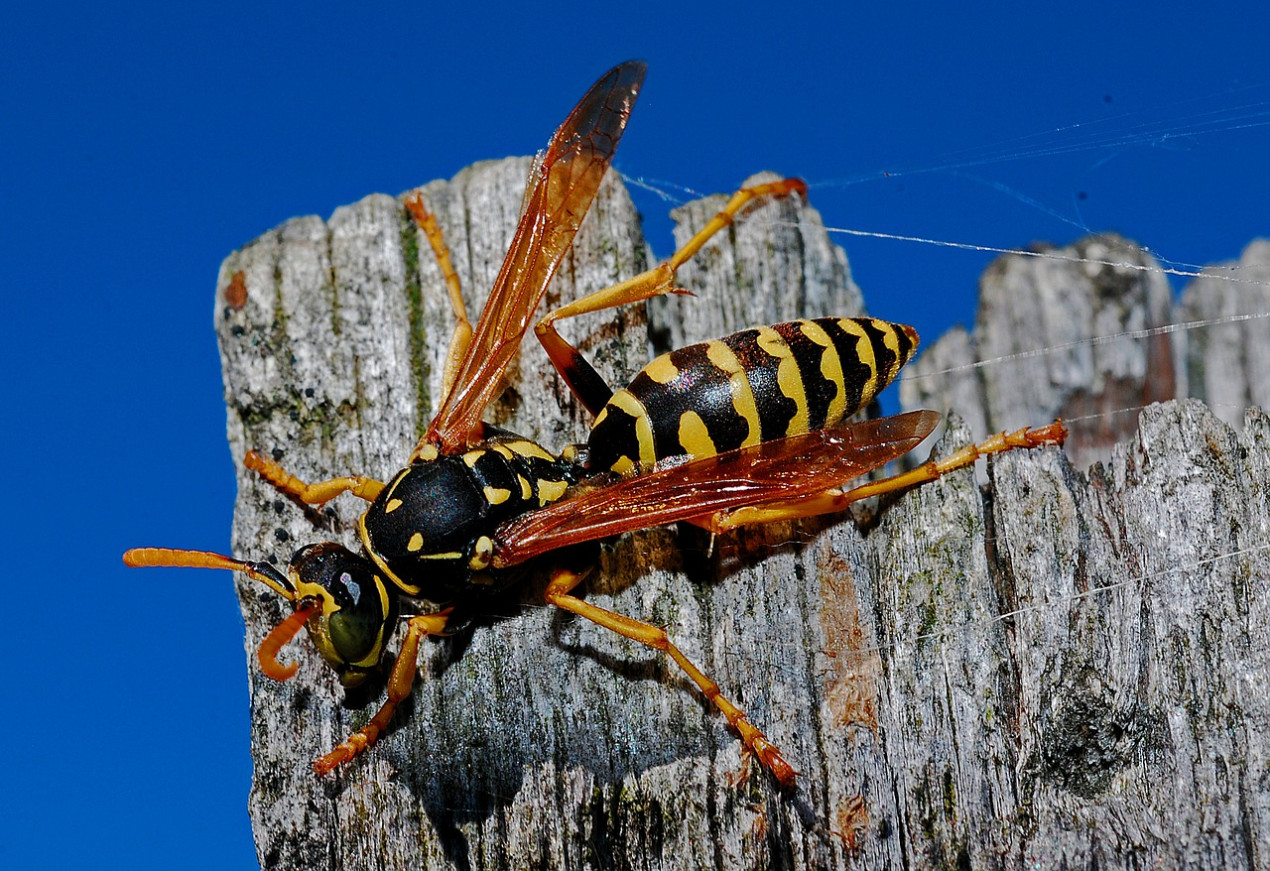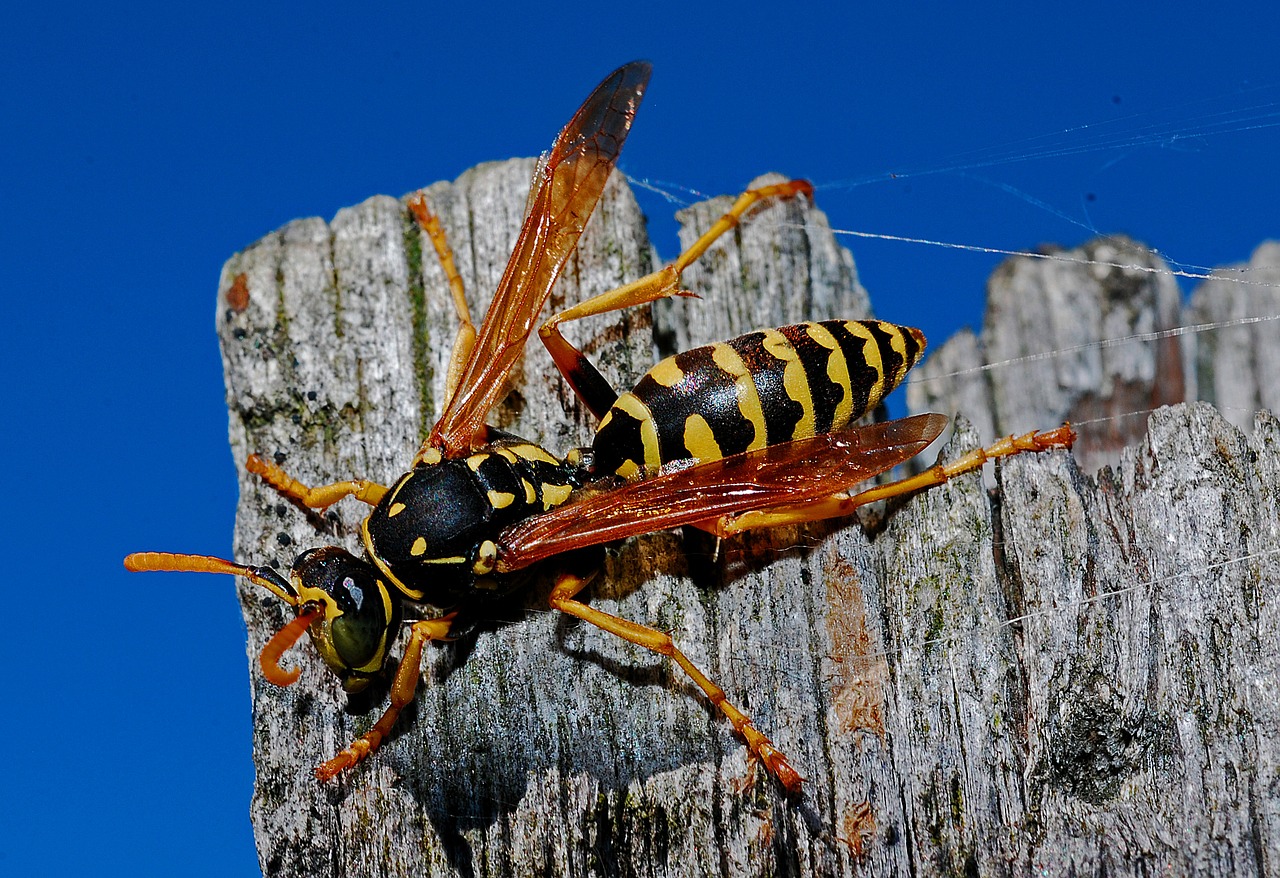
Dangers of bee and wasp stings to dogs and cats
They are the scourge of picnic goers, gardeners and outdoor enthusiasts.
But wasps are also a pest to cats and dogs and, in rare cases, their stings can be potentially lethal.
With temperatures finally on the rise, vets are warning pet owners to be on their guard for the black and yellow irritants.

Cats and wasp stings
The story of cats Aslan and Ghost highlights the dangers posed by stinging insects to pets.
They both needed emergency treatment at Vets Now in Farnham after being stung in the mouth in quick succession.
Their owner takes up the story: “One day Aslan came home with a buzzing in her mouth.
“It was a bee, and despite her best efforts to drop it, it stung her on the lip. While I was removing the bee, Ghost ambled past with his cheek the size of a golf ball.
“I can only assume he’d attempted to catch the bee and failed and Aslan had picked up the battle. I called my vet and was advised to contact Vets Now. By this time Aslan’s face had swollen up, and she couldn’t close her mouth.
“Given their condition, the vet suggested I bring both cats to the clinic. The staff at Vets Now calmed me down, gave the cats various jabs and checked them over. Thankfully, I returned home with two happy, healthy cats. They haven’t quite learned not to chase bees yet, but we’re getting there.”
You might also be interested in:
What our vets say about wasp and bee stings
In the vast majority of cases, wasp and bee stings are not emergencies. But urgent veterinary help may be needed if your pet is stung in the mouth or neck.
Like humans, cats and dogs can be allergic to insect stings, and, in rare cases, they can go into anaphylactic shock if they don’t receive treatment straight away.
Allergic reactions aren’t always immediate so owners who suspect their pet has been stung should keep a close eye on them for at least 24 hours.
This is especially the case for multiple stings.
Signs that your pet has been stung include pain, redness and swelling while an allergic reaction may cause disorientation, sickness or moving and breathing difficulties.
How to ascertain if a wasp or bee sting is serious
The seriousness and severity of an insect sting depends on the pet’s reaction to the venom, and each case is different. However, the location of the sting is also important. For example, stings to the throat, mouth and neck can hinder breathing and should be treated as a potential emergency.
Pet owners who suspect their cat or dog has been stung in one of these areas should seek veterinary advice immediately.
Treatment for wasp stings in dogs and cats
Wasps don’t leave their stinger in the animal’s skin, so there’s no need for removal. Wasp stings are alkaline, so the area affected should be bathed with vinegar or lemon juice as this will neutralise the sting and reduce pain.
Following this, an ice pack should be applied, and your pet’s condition should be monitored for the next 24 hours.
Treatment for bee stings in dogs and cats
Unlike wasps, bees typically leave have a barbed sting in the animal’s skin, and this should be removed.
To do this, gently scrape the sting out using a blunt object such as a bank card. Tweezers aren’t advised as these may squeeze additional venom out of the stinger. As bee stings are acidic, the area should be bathed with a mixture of water and bicarbonate of soda. As with wasp stings, an ice pack should then be applied to the area to provide pain relief.
Owners who suspect their dog has suffered an allergic reaction to an insect sting, or been stung in a dangerous area, should contact their vet straight away. Or, if it’s an emergency and their vet is closed, their nearest Vets Now pet emergency clinic or 24/7 hospital.
Impact of mild winters on wasp numbers
Mild winters may keep heating bills low but they have their downsides. According to experts, higher than normal temperatures in the typically colder months often provides the launchpad for wasps to flourish.
As winter approaches, male wasps die and queens go into hibernation. But a mild winter can result in queens coming out of hibernation earlier, meaning they’ve more time to breed.
Once active, queens start laying eggs quickly and are capable of producing 25,000 workers.
